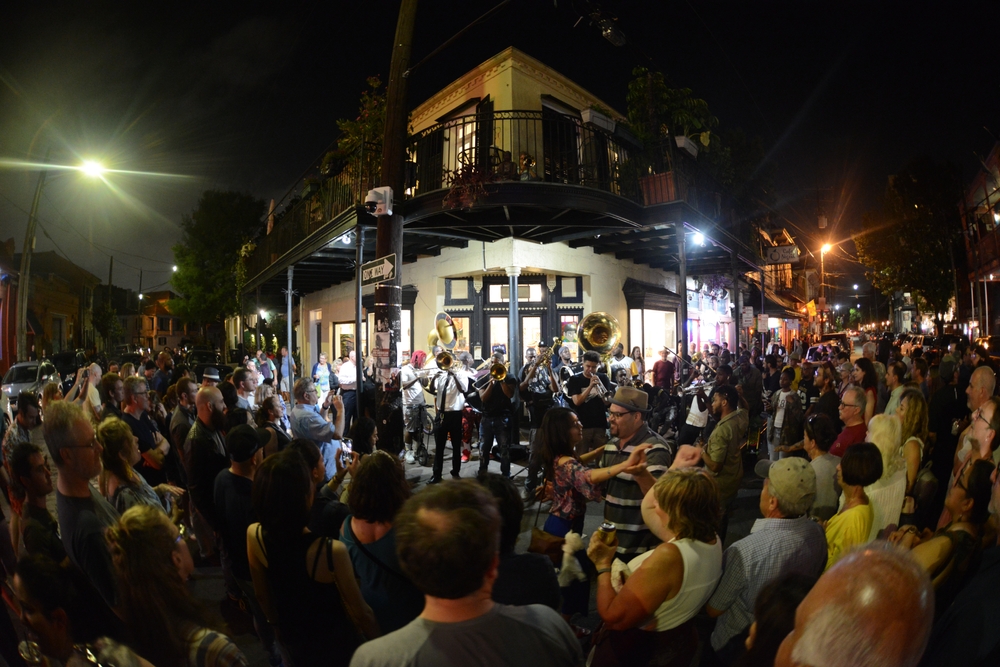Beale Street might be the neon-lit heart of Memphis music tourism, but ask any local where the real musical pulse of the city beats and they’ll point you far from the landmark blues clubs and barbecue joints that draw visitors by the thousands. Beyond the well-trodden tourist strips lies the authentic Memphis, where music innovation continues in unassuming neighborhoods, converted warehouses, and century-old community spaces. These hidden musical treasures not only preserve the city’s rich heritage but push it forward in ways that honor tradition while refusing to be confined by it.
Neighborhood joints where legends drop in
Wild Bill’s stands as perhaps the last authentic juke joint in Memphis, hidden in a nondescript building in North Memphis that most tourists will never see. Since the 1970s, this cash-only, bring-your-own-bottle establishment has maintained the unfiltered essence of Memphis soul and blues. The tiny stage has hosted impromptu performances from Bobby “Blue” Bland and other luminaries when they were alive, while today’s sessions feature musicians who’ve backed Al Green and other Memphis icons. The plastic chairs, styrofoam cups, and unpretentious atmosphere create an experience that no amount of tourism-board marketing could replicate.
The CMPLX in Orange Mound represents the new face of Memphis music innovation. This community arts space in one of America’s first neighborhoods built by and for African Americans hosts everything from traditional blues to cutting-edge hip-hop. What makes The CMPLX special is its commitment to connecting these seemingly disparate musical traditions, demonstrating how Memphis rap draws from the same wellspring as the blues that put the city on the map. Weekend workshops often pair elder musicians with young producers, creating intergenerational conversations through sound.
Hernando’s Hide-A-Way in South Memphis has lived multiple lives since opening in 1965. While most tourists never venture to this historic venue, it represents a crucial piece of Memphis music history where Jerry Lee Lewis once regularly performed. After years of closure, its recent revival has brought back the honky-tonk piano and rockabilly spirit that defined an era. The difference now is the diversity of the audience and performers, creating cross-cultural musical exchanges that feel uniquely contemporary while honoring the venue’s storied past.
Warehouse districts becoming sound laboratories
Crosstown Arts tucked inside the massive Crosstown Concourse redevelopment has created one of the city’s most forward-thinking music venues. The intimate listening room hosts experimental jazz, electronic music pioneers, and global sounds rarely heard elsewhere in Memphis. What distinguishes the space is its exceptional acoustics and the curatorial approach that places Memphis musicians alongside international artists, creating dialogues that expand the city’s musical vocabulary while remaining rooted in its soulful tradition.
Growlers in the Broad Avenue Arts District represents the underground rock scene that many visitors never realize thrives in Memphis. This mid-sized venue has become the home for psych rock, punk, metal, and indie bands both local and touring. The connection to Memphis musical traditions might seem tenuous until you hear how many of these seemingly alternative acts incorporate soul rhythms, blues structures, and gospel-influenced vocals into their sound, creating distinctly Memphis interpretations of contemporary genres.
The Memphis Listening Lab hidden on the upper floor of Crosstown Concourse houses over 50,000 vinyl records and offers both a stunning archive and active programming space. Unlike tourist-oriented music experiences, the Lab functions as both library and performance venue where Memphis music history gets recontextualized through listening sessions, rare recordings, and intimate performances. Music scholars mix with curious locals in this space where the depth of Memphis music beyond the well-known hits becomes apparent.
Sacred spaces with secular sounds
Clayborn Temple has reclaimed its place in both civil rights history and Memphis musical culture. This historic African American church where striking sanitation workers organized in 1968 has been restored as a community arts center. The monthly “Soul Sunday” series brings gospel traditions into conversation with soul, R&B, and even hip-hop, all within the soaring acoustics of the sanctuary. The mixture of sacred space and secular sounds creates performances with unusual emotional depth, even by Memphis standards.
Green Room at Crosstown Arts offers one of the city’s most intimate listening experiences in a space designed specifically for acoustic perfection. What separates this venue from tourist destinations is its musician-centered approach, with exceptional sound systems, respectful audiences, and fair compensation that attracts both established artists seeking a quality experience and emerging voices needing a platform. The programming spans traditional Memphis sounds to experimental compositions, all presented with equal reverence.
St. Mary’s Cathedral might seem an unlikely music venue, but its Episcopal choir represents one of the finest traditional vocal ensembles in the city. Their public performances incorporate both sacred classics and spirituals tied to Memphis musical traditions. Visitors who stumble upon their performances experience the technical excellence and emotional expression that has influenced generations of Memphis secular musicians, providing insight into one of the foundational elements of the city’s distinctive sound.
After-hours authentic experiences
Dirty Crow Inn appears at first glance to be just another neighborhood bar in South Memphis, but locals know it hosts some of the most authentic late-night jam sessions in the city. After the tourist-focused venues close down, professional musicians often gather here to play for themselves rather than for audiences. These spontaneous collaborations between session players who’ve backed famous names but rarely get spotlight themselves reveal the astonishing depth of musical talent that makes Memphis recordings so distinctive.
Second Line Jamerican in midtown merges Memphis traditions with Jamaican musical influences, creating a cultural fusion space unlike anywhere else in the city. Late-night dub sessions and reggae-influenced blues performances demonstrate how Memphis continues to evolve as a musical melting pot. The Caribbean food served alongside the performances completes a multisensory experience that few visitors to the city ever discover.
Russian’s demonstrates how Memphis music culture extends into unexpected communities and spaces. This Eastern European restaurant transforms into an unlikely venue for experimental electronic music and avant-garde performances several nights monthly. The juxtaposition of traditional Eastern European décor with cutting-edge sound art creates a surreal experience that highlights how Memphis continues to serve as fertile ground for unexpected cultural intersections.
The living rooms where traditions pass down
Memphis Slim Collaboratory operates from the renovated home of blues legend Memphis Slim, providing recording facilities and mentorship for emerging artists. Unlike tourist-focused museums that merely document the past, the Collaboratory actively nurtures the next generation of Memphis musicians. Workshops and recording sessions here connect young artists directly to the techniques and approaches that defined the Memphis sound, ensuring traditions remain vibrant rather than becoming museum pieces.
Orange Mound Tower sounds grand but actually occupies a former water tower converted into a community recording studio and performance space. This grassroots facility serves one of Memphis’s historically significant African American neighborhoods, providing resources for local youth to create music that reflects contemporary experiences while drawing from the area’s rich cultural heritage. Weekend workshops often feature elders teaching traditional techniques alongside young producers sharing digital innovations.
Stax Music Academy may be connected to the famous museum, but its daily work developing young musicians happens largely out of the tourist spotlight. This educational program doesn’t just teach music history but actively cultivates the next generation of Memphis soul practitioners. Visitors who seek out their student performances witness the living transmission of Memphis musical traditions, adapted for contemporary expression but unmistakably carrying the city’s distinctive DNA.
The true Memphis musical experience extends far beyond the tourist-friendly confines of Beale Street and Elvis-focused attractions. For those willing to venture into neighborhoods rarely mentioned in guidebooks, the rewards are immense, authentic cultural experiences where music isn’t presented as a museum piece but lives and evolves in real time.
These hidden musical treasures reveal a Memphis that refuses to be frozen in amber, where traditional sounds inform innovation and where music remains integrated into community life rather than packaged exclusively for tourist consumption. For visitors willing to step off the established path, these venues offer connections to the authentic creative spirit that made Memphis a musical powerhouse in the first place, and ensure its continued relevance in American musical culture for generations to come.


















